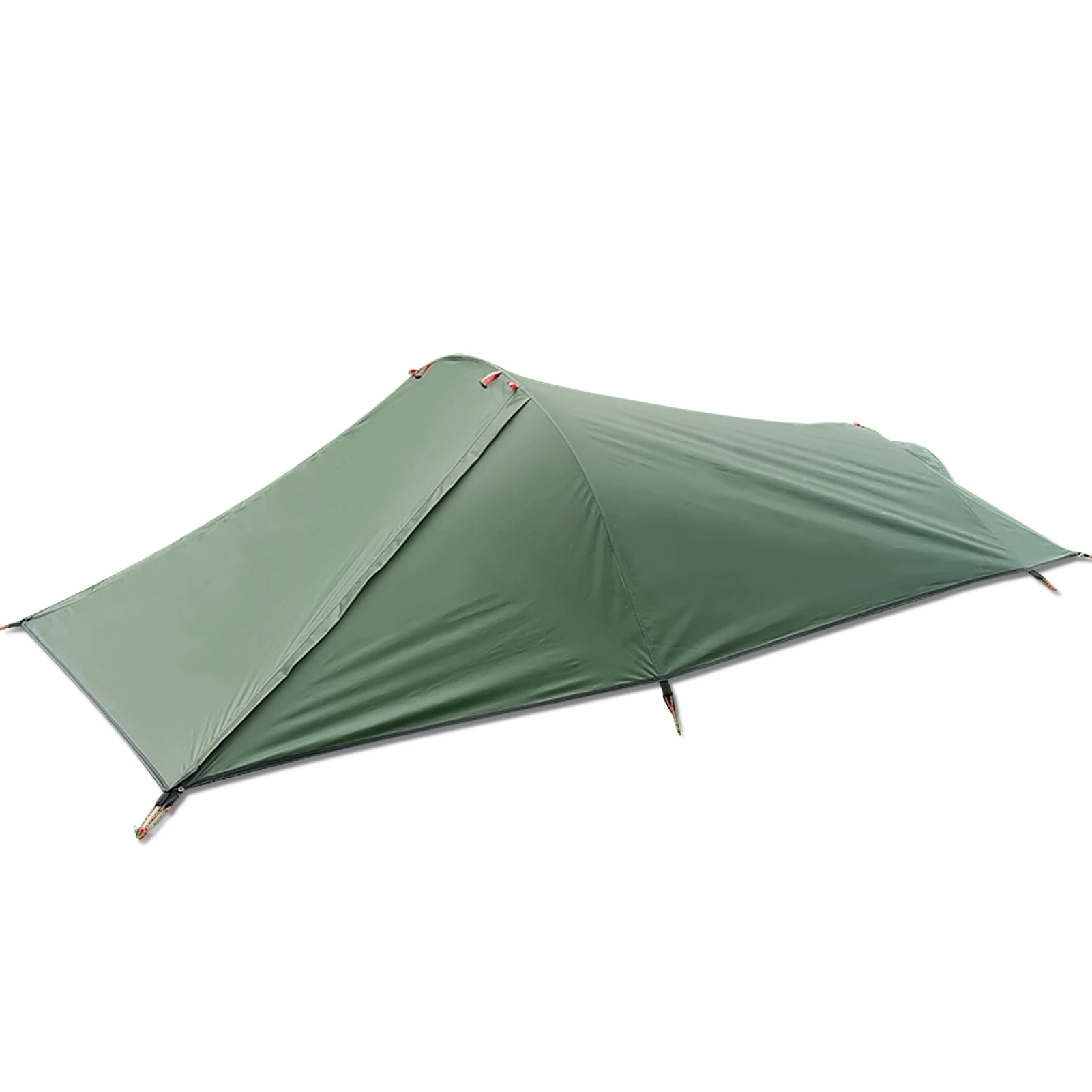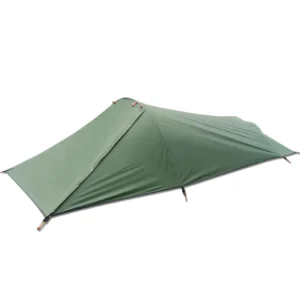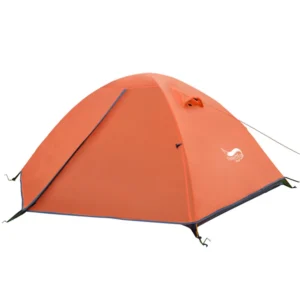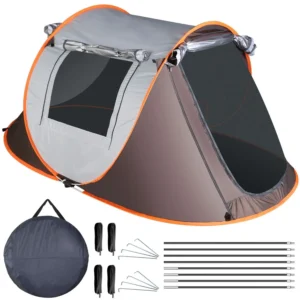Ultralight Bivy Tent
Shed serious pack weight with an ultralight bivy tent. Enjoy quick, reliable shelter with more breathing room than a bivy sack on your solo adventures.

Showing the single result
Lightweight Backpacking Tent, Ultralight Backpacking Tent, Ultralight Bivy Tent
Ultralight Single Person Camping Tent with Aluminum Poles for 3-Season Backpacking Waterproof DesignPrice range: $94.88 through $326.82 Select options This product has multiple variants. The options may be chosen on the product page
Showing the single result
What Is an Ultralight Bivy Tent?
An ultralight bivy tent represents the perfect middle ground between a traditional bivy sack and a full tent. Weighing just 7-25 ounces (200-700g), these minimalist shelters offer the protection you need without the burden of excess weight. Unlike standard bivy sacks that simply cover your sleeping bag, ultralight bivy tents incorporate minimal pole structures to create more livable space while maintaining an incredibly small footprint.
The typical construction features a waterproof floor to keep ground moisture at bay, breathable top materials to manage condensation, and just enough structure to keep fabric off your face. These shelters are the go-to choice for solo backpackers, bikepackers, alpinists, and minimalists who count every ounce in their pack. When packed down, most compress to about the size of a water bottle, making them dramatically smaller than traditional backpacking tents.
Key Benefits of Ultralight Bivy Tents
The most compelling advantage of bivy tents is their remarkable weight efficiency. Compared to even the lightest one-person tents (which typically weigh 1.5-2.5 pounds), bivy tents can slash your shelter weight by 50-75%. This translates to less fatigue, faster travel, and the ability to carry less while experiencing more.
Setup and takedown are refreshingly simple—most bivy tents can be pitched in under two minutes, allowing you to make camp quickly when weather threatens or darkness falls. This simplicity eliminates the frustration of complex pole assemblies and multiple stake points.
Bivy tents also offer an unmatched connection to nature. With your shelter hugging close to your body, you’ll feel more immersed in your surroundings while still maintaining protection from insects and elements. Many outdoor enthusiasts appreciate the added warmth these shelters provide, typically boosting sleeping bag temperature ratings by 5-10°F through reduced air circulation.
For those who value stealth camping, the low profile of bivy tents makes them ideal for tucking away in small spaces where larger tents simply won’t fit. And surprisingly, despite their specialized nature, many quality bivy tents cost less than their full-tent counterparts.
Essential Design Features to Consider
Material Construction
The foundation of any bivy tent begins with its materials. Most feature waterproof floors made from silnylon (silicone-coated nylon), silpoly (silicone-coated polyester), or premium DCF (Dyneema Composite Fabric). The top sections typically employ more breathable fabrics with water-resistant treatments to balance protection with condensation management.
Different structural approaches dramatically affect usability. Hooped designs incorporate a single lightweight pole to create space around your head and shoulders, while non-hooped versions rely on tension from guy lines or your body to maintain shape. The entry system deserves careful consideration—side-entry designs generally offer easier access but may add weight compared to top-entry options.
Ventilation is perhaps the most critical feature of any bivy tent. Look for models with multiple mesh panels, adjustable openings, or innovative air channels that allow moisture to escape while keeping rain out. Effective bug protection through fine mesh screens ensures peaceful sleep during mosquito season without sacrificing airflow.
Floor dimensions vary significantly between models, with most ranging from 78-90 inches (198-229 cm) long and 25-36 inches (63-91 cm) wide. While these dimensions might seem tight compared to traditional tents, the most livable designs maximize space where it matters most—around your upper body.
Material Technologies Explained
The fabric choice for your bivy tent significantly impacts its performance and longevity. DCF (formerly known as Cuben Fiber) offers incredible waterproofness and the lightest possible weight but comes with a premium price tag and less durability against abrasion. Silnylon stretches slightly when wet but provides excellent waterproofing at a moderate weight. Silpoly maintains its tension when wet and often costs less than other options.
Waterproof ratings for floors typically range from 1,200-3,000mm Hydrostatic Head—sufficient for keeping ground moisture at bay even on wet surfaces. The balance between waterproofness and breathability remains the crucial equation, as increased water resistance often comes at the cost of decreased vapor transmission.
Weather Performance and Limitations
Bivy tents excel in mild to moderate conditions but have inherent limitations in severe weather. Most handle light rain without issue, and properly guyed models can withstand surprising wind levels due to their low profile. However, extended downpours present challenges for even the best designs, as limited interior space means any moisture entry becomes problematic quickly.
Site selection becomes even more critical with bivy tents than with larger shelters. Choosing slightly elevated ground with good drainage dramatically improves performance in wet conditions. Most bivy tents have minimal snow load capacity, making them better suited to three-season use than true winter expeditions.
For trips with extended poor weather forecasts, consider pairing your bivy with a small trekking pole tarp for enhanced protection while maintaining a lightweight system.
Ideal Usage Scenarios for Bivy Tents
Bivy tents truly shine in specific situations where weight and pack size are paramount concerns. Alpine climbers value them for summit pushes, where every ounce matters and sleeping spots may be limited to narrow ledges. Ultralight backpackers and thru-hikers appreciate how these shelters can reduce base weight while providing essential protection.
The compact nature of bivy tents makes them ideal companions for bikepacking adventures where storage space comes at a premium. They also serve as excellent emergency shelters to carry during day hikes or trail runs when a full tent would be impractical but having backup protection is prudent.
While perfect for short trips, some experienced minimalists successfully use bivy tents for extended journeys, though this requires careful planning and comfort with confined spaces.
Expert Tips for Maximizing Comfort
Achieving comfort in a bivy tent requires thoughtful techniques. First, always select sites with natural wind breaks and good drainage. Position your entrance downwind to minimize drafts and prevent rain entry. Consider elevating the head end slightly for improved runoff and breathing comfort.
To minimize condensation—the most common complaint with these shelters—leave vents open whenever weather permits and avoid cooking or storing wet gear inside. A properly sized sleeping pad not only provides comfort but creates structure within many bivy designs.
Organize your essential items in small stuff sacks and position them at the tent entrance for easy access, keeping everything else in your pack outside under rain protection if needed. These simple strategies transform the bivy tent experience from merely tolerable to genuinely enjoyable for those who value simplicity.
Is an Ultralight Bivy Tent Right for You?
Before investing in a bivy tent from Explore Elements, honestly assess your comfort with confined spaces. Do you sleep soundly in a mummy bag, or do you tend to toss and turn? Bivy tents reward those who sleep relatively still and don’t mind close quarters.
Consider the typical weather patterns where you’ll be camping. Bivy tents excel in dry or mildly wet conditions but may feel limiting during extended rainstorms. Evaluate how important weight savings are in your outdoor equation—if cutting pounds is your primary goal, the compromises may be worthwhile.
Finally, think about your typical trip duration. Many users find bivy tents ideal for overnight to three-night adventures but prefer more spacious shelters for longer journeys where weather variability increases.
Common Questions About Ultralight Bivy Tents
Condensation management tops the list of frequently asked questions. While no bivy tent eliminates condensation entirely, models with multiple ventilation points and breathable upper fabrics minimize the issue. Proper site selection and leaving vents open whenever possible further reduces moisture buildup.
Most quality bivy tents last 300-500 nights with reasonable care, though ultralight materials require gentle handling. Cleaning is straightforward—typically requiring just a gentle rinse with clean water and air drying before storage.
Standard sleeping pads work well in most bivy tents, though wider models may fit tight in some designs. Temperature regulation proves surprisingly effective, with the small air space heating quickly from body warmth, making these shelters warmer than expected for their weight class, even for some winter camping applications.
How to Choose the Perfect Ultralight Bivy Tent
Start by identifying your primary use case: Will you primarily use it for alpine approaches, bikepacking, or as backup protection? This determination guides many subsequent decisions.
Set a realistic budget, understanding that ultralight materials often command premium prices, but long-term durability justifies the investment. List your non-negotiable features—whether that’s a certain minimum interior width, specific weatherproofing level, or bug protection requirements.
Finally, consider compatibility with your existing sleep system. Your sleeping bag’s loft, pad dimensions, and typical sleeping position all influence which bivy tent designs will serve you best through countless adventures under the stars.




